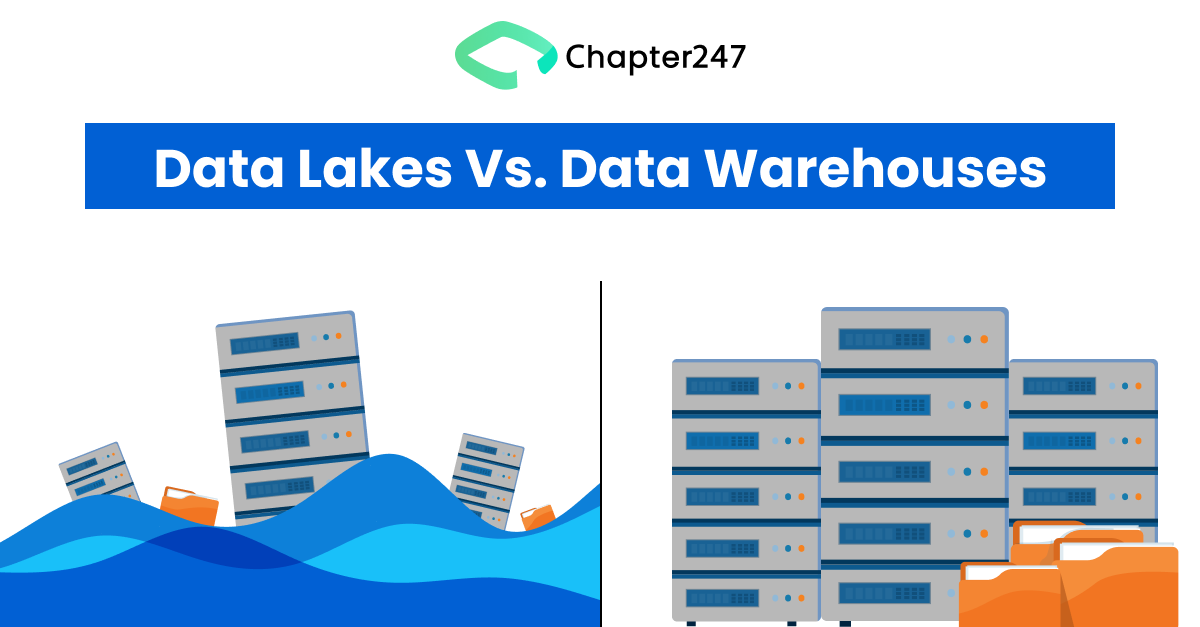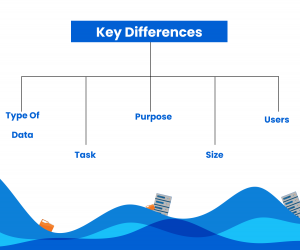When it comes to storing data, data warehouses and data lakes are the two most popular options. Data warehouses are for analyzing archived structured datasets, whereas data lakes are for storing big datasets of all structures.
In this blog post, we’ll discuss the main differences between the two. The below pointers break down their differences, check them out!
Key Difference
Data Lakes are used to store all the data that is collected over the course of time and they can be used to support data driven decision making. Data Lakes are not a replacement for Data Warehouses, but it is a repository of all the data and they can be accessed by many different tools. It is a place where data can be stored, analyzed, and visualized. This allows for companies to save time and money by keeping their data accessible without the need for complex software or hardware
Data Warehouses on the other hand, are a central place where all the data is stored and it is ready for analytics or exploratory analysis. They are not meant for storing large amounts of unstructured data like Data Lakes. But are central places where all the data is stored and it is ready for analytics or exploratory analysis.
We can say that Data Lakes are used with Data Warehouses. When the data is collected, it is stored in a Data Warehouse or ETL processes. When a decision needs to be made, the appropriate analysis of the data is done in the Data Warehouse and then decisions are made based on that data.
Type of data
You should be able to clean data because it is, by definition, bad. We all know that most of the data in the world is unstructured. That’s not good enough for generating insights and making decisions. Unstructured data that has been cleaned to fit a schema, organized into tables and defined by data types and relationships, is called structured data. This is the fundamental difference between molecules and crystals.
Over the past few years, there has been a rise in data lakes. These are repositories where data from various sources such as IoT devices, real-time social media streams, user data and web application transactions are being stored. For our purposes, let’s assume data in a data warehouse has been cleaned to fit a relational schema.
Purpose
Data Lakes are cost-effective ways to store data generated from different sources. As data is in a structured format, it will be cheaper to work with. Structured data is easier to access because there are an agreed-upon set of rules for data queries. This means it is much more efficient for getting the latest insights about trends.
You may notice that data lakes and data warehouses complement each other when it comes to a company’s data workflow. Data lakes are able to store collected company data instantly. If a specific business question comes up, a portion of the data deemed relevant is extracted from the lake, cleaned, and exported into a data warehouse
Users
Data lakes and data warehouses are useful for different purposes. Data analysts, business analysts, and other users often find the data they need within a data warehouse – an organized library of processed information that they can use to get their work done. The information in these warehouses is easier to access than in a data lake. This is perfect for people who aren’t as skilled with database systems
Data lakes are set up and maintained by data engineers who integrate them into data pipelines. Data scientists work more closely with data lakes as they contain data of a wider and more current scope.
Tasks
Data engineers store data in lakes to take advantage of the unstructured nature of the data. Lakes have become a popular option for storing coming data and not only serve as storage. Remember, unstructured data is more flexible and scalable, which is oftentimes better for big-data analytics. Deep learning may seem complicated and difficult, but people run it on data lakes which can then be scaled. This is because deep learning involves training data which would easily surpass any size of data set on a laptop or desktop computer.
Data warehouses are often set up for analyst users who mostly read and aggregate data with no need to insert or edit the information. This makes the data immaculately clean and organized, making it perfect for business insights.
Size
It should be no surprise that data lakes are much bigger than their data warehouse counterparts because they retain all of your company’s available data. They often reach into the petabyte range, which is equal to 1 million gigabytes. Data warehouses are more selective on what type of information they hold and as a result are smaller in size.
Conclusion
When deciding between a data lake or data warehouse, be sure to take a look through these categories. You’ll find that one of them best suits your needs! Although you may think that all data can be stored in one place, you will inevitably find the need to use a combination of solutions.
This is especially true in the construction of data pipelines. You can see this in action in our Building Data Pipelines blog post. If you are interested in finding out more about their differences and/or designing your own data warehouse, have a look at our website and connect with us for more details and support.









